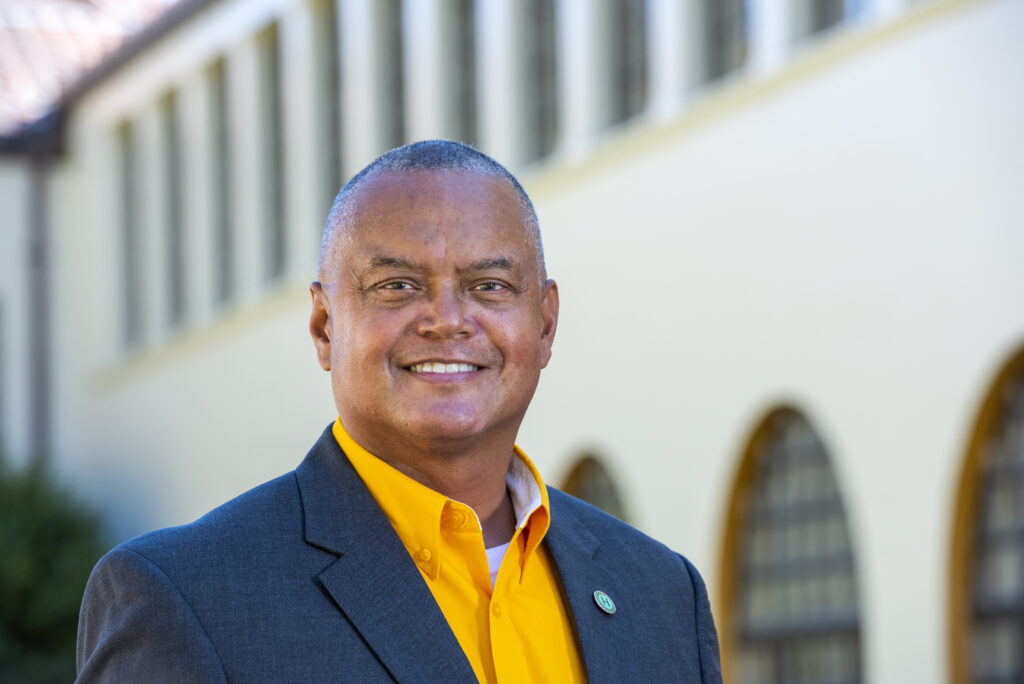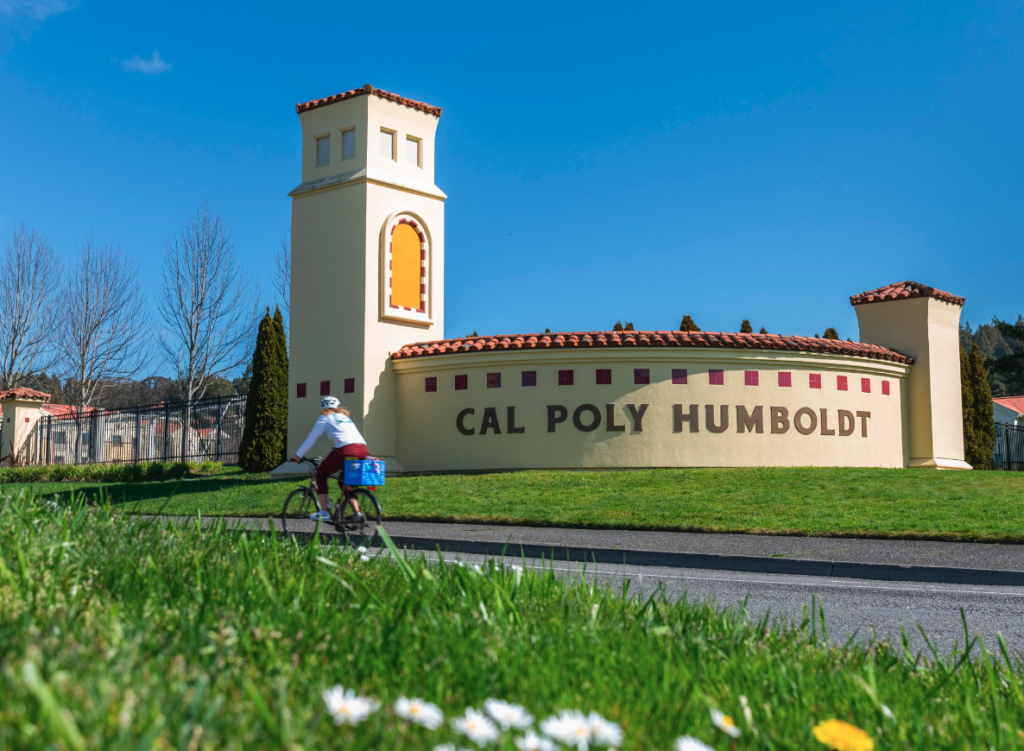
Resigning Cal Poly Humboldt President Tom Jackson Jr.
California State Polytechnic University, Humboldt
Cal Poly Humboldt President Tom Jackson Jr. will step down on Aug. 11 following a spring semester that saw calls for his resignation after the university responded to pro-Palestinian demonstrations on campus by sending in police.
The Northern California campus was among many this spring that experienced student-led protests calling for an end to Israel’s military operations in Gaza. Jackson faced criticism for the decision to use police to quash campus protests and to close the campus for the final weeks of the spring semester.
The incidents of the spring overshadow the end of Jackson’s five years at the university, a period of transformation in which Humboldt was transformed into the state’s third polytechnic institution. During Jackson’s tenure, the university upgraded laboratory space, expanded broadband, renovated buildings and launched new majors focused on science, technology, engineering and math (STEM), buoyed by a $458 million investment from the state.
The polytechnic overhaul has been credited with boosting new student applications and turning around the university’s financial prospects at a time when many campuses have experienced declining student headcounts.
In a written statement, Jackson called the university “an amazing place with special people” and urged colleagues to remember that their work “makes a positive difference for our students.”
A Cal Poly Humboldt news release said Jackson “has been consulting with the CSU Chancellor’s Office to ensure an orderly transition since early spring semester.”
The spring marked a pivot point in Jackson’s presidency. In April, hundreds of students occupied the university’s Siemens Hall, joining a wave of campus protests calling on universities to sever financial ties with Israel.
The San Francisco Chronicle reported that protesters used “furniture, tents, chains and zip ties” to block the entrances to the buildings.
The university responded by calling in law enforcement to remove protesters from the hall. The Appeal reported in June that police arrested 32 people.
The police response prompted Cal Poly Humboldt’s university senate to pass a vote of no confidence in Jackson, arguing that he and chief of staff Mark Johnson mishandled the protests by summoning “armed, non-university police officers.” The resolution said that action “created unnecessary escalation resulting in physical assault on students and faculty and injury of law enforcement personnel.”
The university ultimately closed campus on April 26, citing protesters’ attempts “to break into multiple locked buildings with the intention of either locking themselves in, vandalizing or stealing equipment.”
The university continued classes remotely through May 10, the end of the spring semester.
The backlash to the university’s response to the protests continued. Subsequent university senate resolutions called on the Humboldt County district attorney, Stacey J. Eads, to drop charges against students and faculty and asked the university to drop the interim suspensions of 69 students. The senate also sought an investigation into the events and decision-making that followed the April 22 protest.
A group of 320 faculty and staff ultimately signed a letter calling for both Jackson and chief of staff Johnson to be removed from their positions.
Becoming president
Jackson was appointed to the university presidency in May 2019, becoming not only the first Black president in Humboldt’s history, but also its first Filipino and Native American president, according to Cal State. Jackson previously served as president of Black Hills State University in South Dakota and vice president for student affairs at the University of Louisville and Texas A&M University-Kingsville.
At the time of his appointment in 2019, undergraduate enrollment was falling steeply. Undergraduate enrollment peaked at 8,242 students in 2015 but had dwindled to 6,443 by fall 2019. With the Covid-19 pandemic, it hit a low of 5,199 in 2021.
Declining enrollment threatened to have serious consequences for the university’s financial future. Under a multiyear agreement with Gov. Gavin Newsom and the Legislature, campuses in the Cal State system are on the hook to increase enrollment in order to receive increases in state funding.
A polytechnic future
Becoming a polytechnic campus appeared to improve Humboldt’s outlook. Newsom set aside nearly $500 million to turn Humboldt into a STEM-focused campus with new majors like mechanical engineering, marine biology and fire science management. The university is about to start construction on a new engineering building, according to a news release.
The name change from Humboldt State to Cal Poly Humboldt became official in January 2022. The rebranded university enjoyed a record-setting application season for fall 2023, fielding almost twice as many applications as the previous year.
The transition was not without its growing pains.
In early 2023, the university announced that many sophomores, juniors and seniors would be housed in hotels and other off-campus options rather than on-campus residence halls to make way for new students. Hundreds of students protested the change. An online petition demanding “fair student housing” got more than 5,000 signatures.
New housing projects will help to meet the demand. EdSource reported in 2023 that a new 950-bed housing complex, the Craftsman Mall, was expected to open in 2025 and that a second, 650-bed project would open in 2026. Ultimately, campus leaders want to add about 4,000 more beds.
In fall 2023, the university’s undergraduate enrollment ticked up 2.2% to 5,419 students.
The news release announcing Jackson’s plans to step down promoted the university’s financial turnaround, saying Humboldt has balanced budgets after carrying a $25 million deficit. The university is also bringing in more than $67 million annually in research grants and contracts, according to the release, and attracted more than $50 million from a fundraising campaign. Budget data from the Chancellor’s Office shows the university’s revenues exceeded its expenses by $117 million as of 2022-23. It also touted the university’s work with the region’s Tribal Nations, cooperation with the two-year College of the Redwoods, expanded international programs and a bachelor’s degree program at Pelican Bay State Prison.
Looking ahead
Jackson will “retreat” to a tenured professorship at the College of Professional Studies and the College of Extended Education & Global Engagement.
“We do the very best we can every day, trusting the faculty, staff and students to do the same,” Jackson said in the statement.
Cal State Chancellor Mildred García praised Jackson’s leadership in establishing Humboldt as a polytechnic institution, saying in a statement that the transition “inspired significant state funding to expand academic offerings, facilities and campus services, and enrollment growth.” She also thanked him for “his lifelong dedication to student success and educational equity.”
An interim president will be appointed shortly, according to the news release, followed by a national search for a replacement within the next year.


